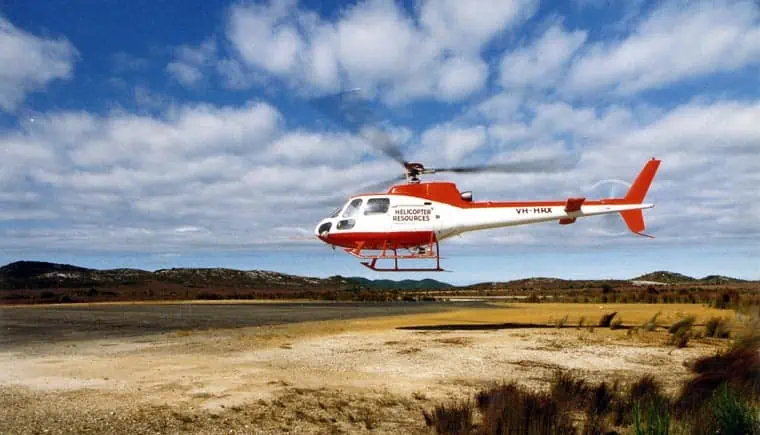Track Cutters
Track Cutters: During the 1980s, I worked for a contractor commissioned by the Bureau of Mineral Resources to cut tracks for mineral exploration. The walking tracks were cut as gridlines through the forest. Geologists later used these access tracks to search for and map mineral potential.
Exploration in South West Tasmania can be pretty challenging and expensive. Track cutters cleared some vegetation necessary to allow geological work in the western forested areas. The dense undergrowth and ‘horizontal scrub’ make for a back-breaking job.
Base Camp
Track cutters like us were flown in by helicopter from Queenstown. We then worked solidly for ten days whilst living in bush camps. Our first landing was at Point Hibbs on the coast. We landed on the beach as there were no clearings in the forest where a helicopter could land. From here, we backpacked all our equipment to base camp. This included chainsaws, fuel and axes 15 kilometres to the start point, where we set up camp.
Each day we would cut over 1km of track, and on a good day, we might manage 1.5 km. Towards the end of the ten days, we were walking 20 km to and from work whilst still cutting around 1 km of track.
One of our tasks on the first trip was to create a helipad to reduce walking distances for the next crew coming in. Finding a suitable landing area wasn’t easy. After much scouting and deliberation, Peter decided that an old Myrtle tree had to be felled. I counted the rings of the fallen tree, and it was over 500 years old. A sad day indeed to see such a majestic tree laid waste for a landing pad. I carried out a small piece hewn from the log that fitted in my pack. This served as a kitchen chopping board for 20 years and my fish cleaning board for the last 15 years.
If you enjoyed this, you also like the Wilderness Advisor page.





